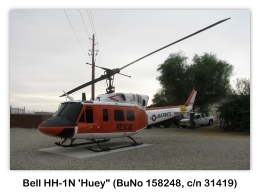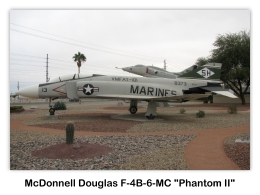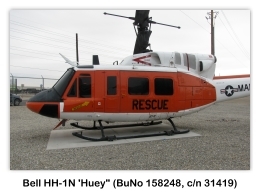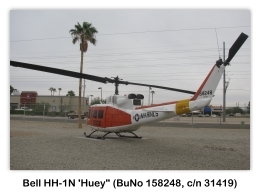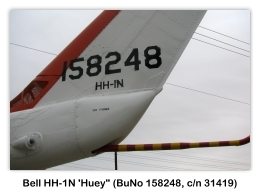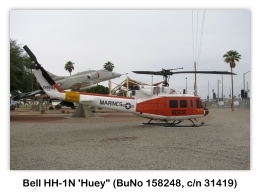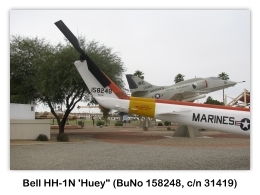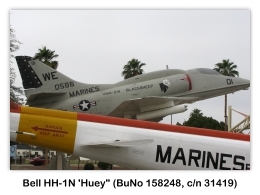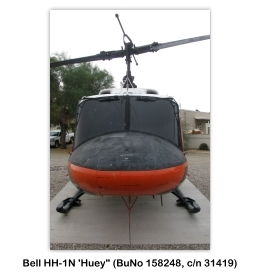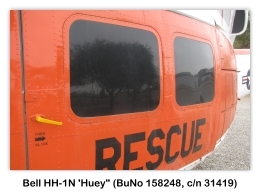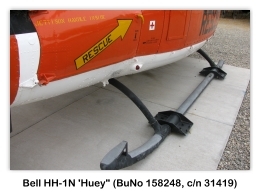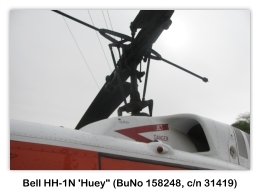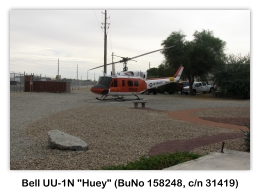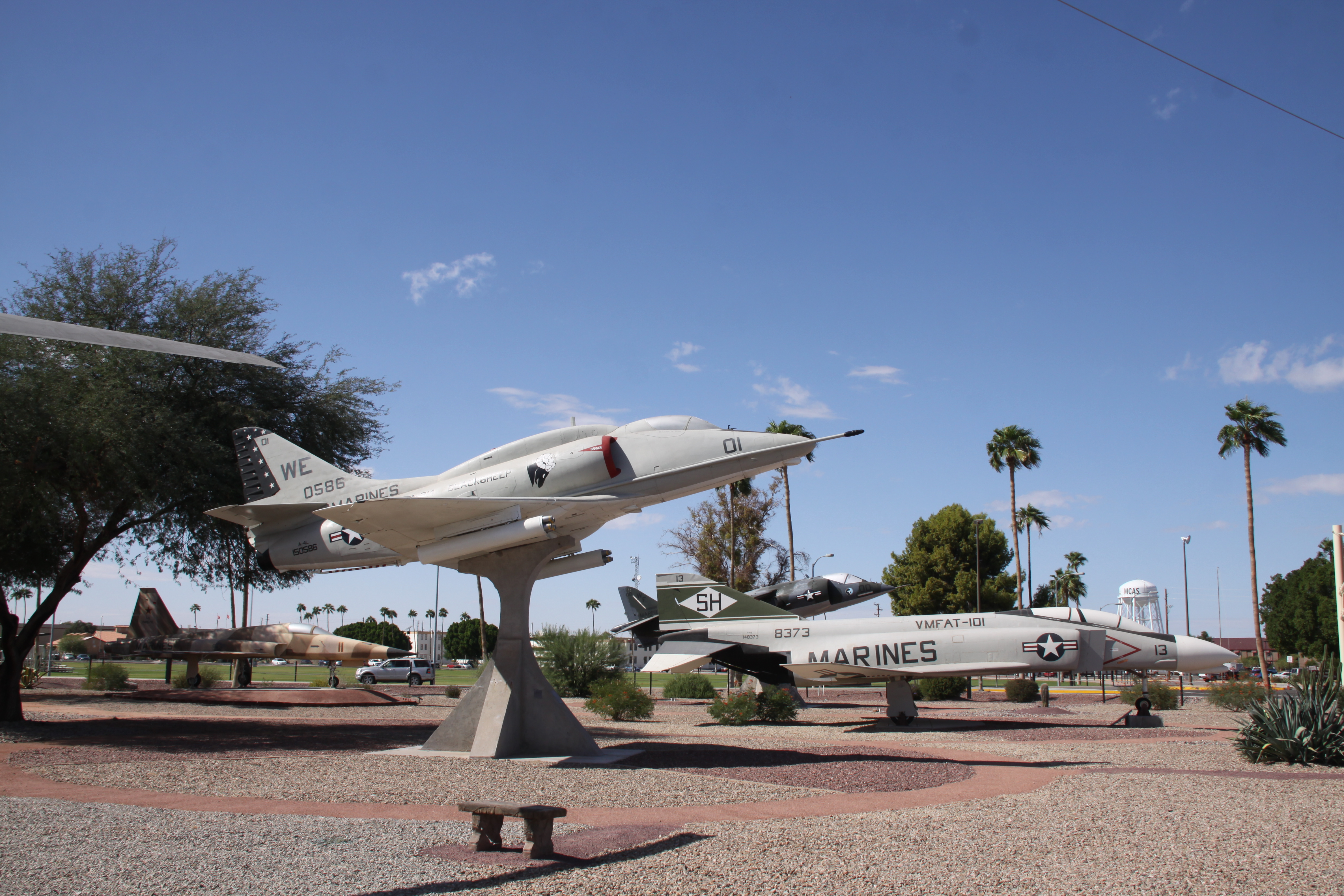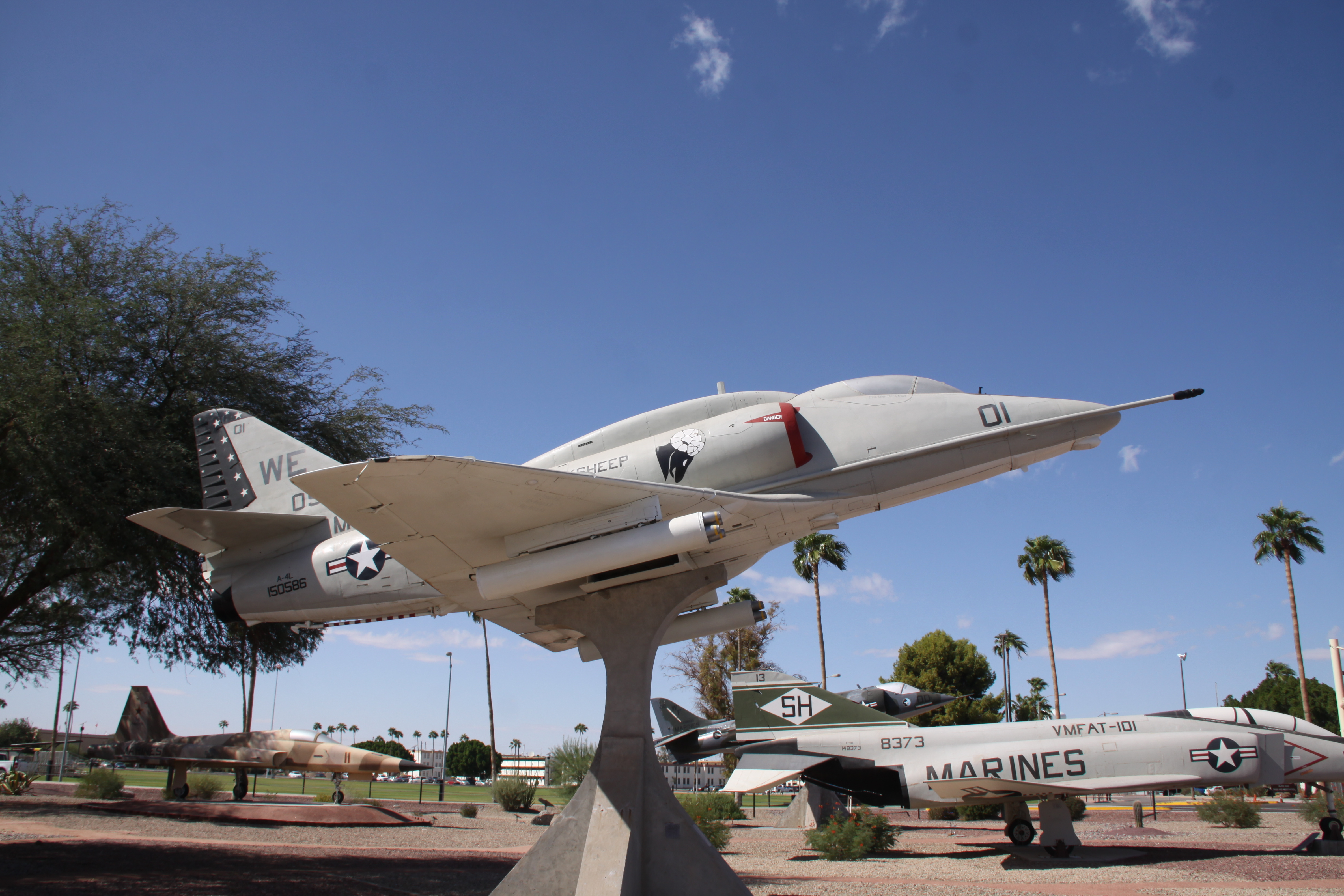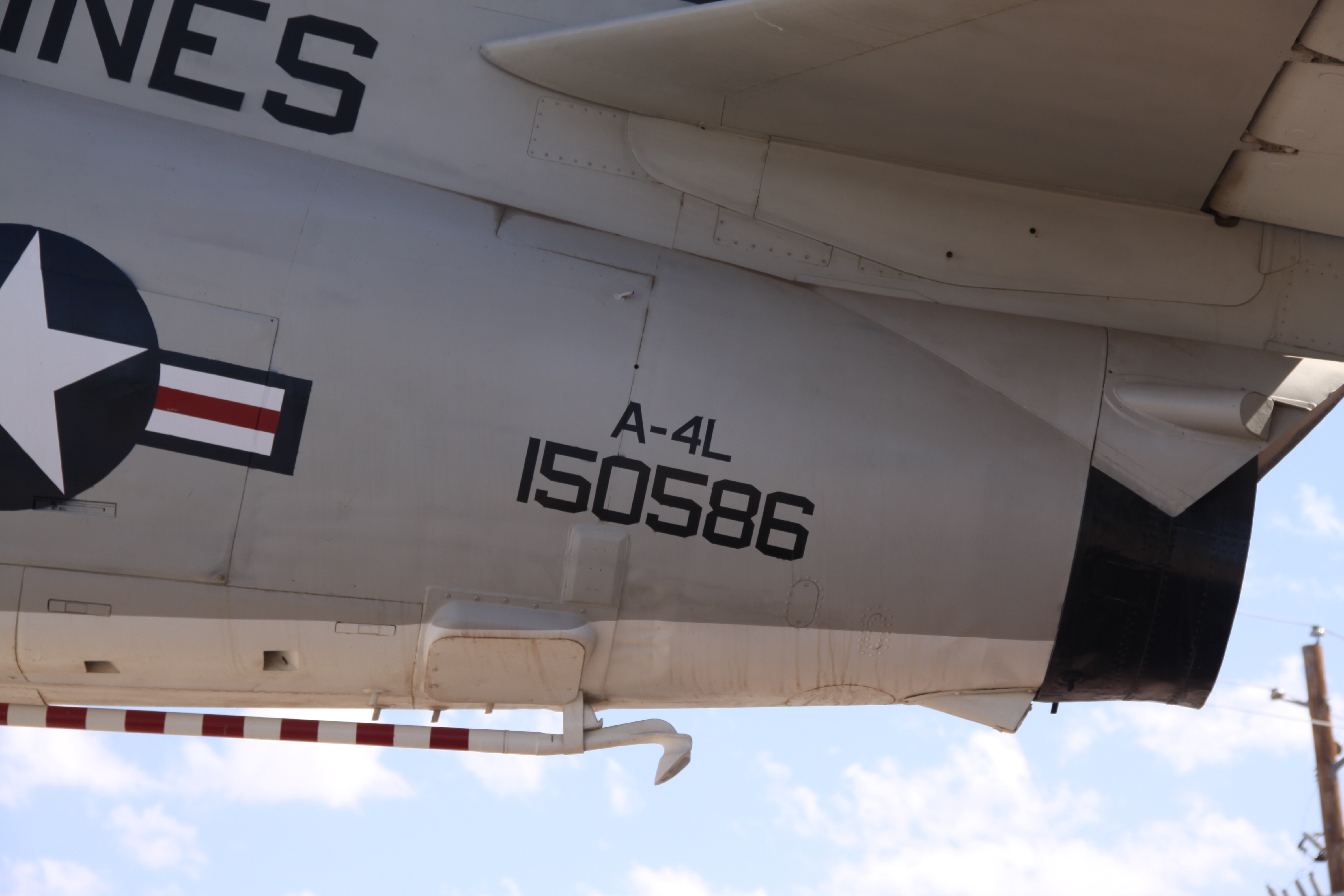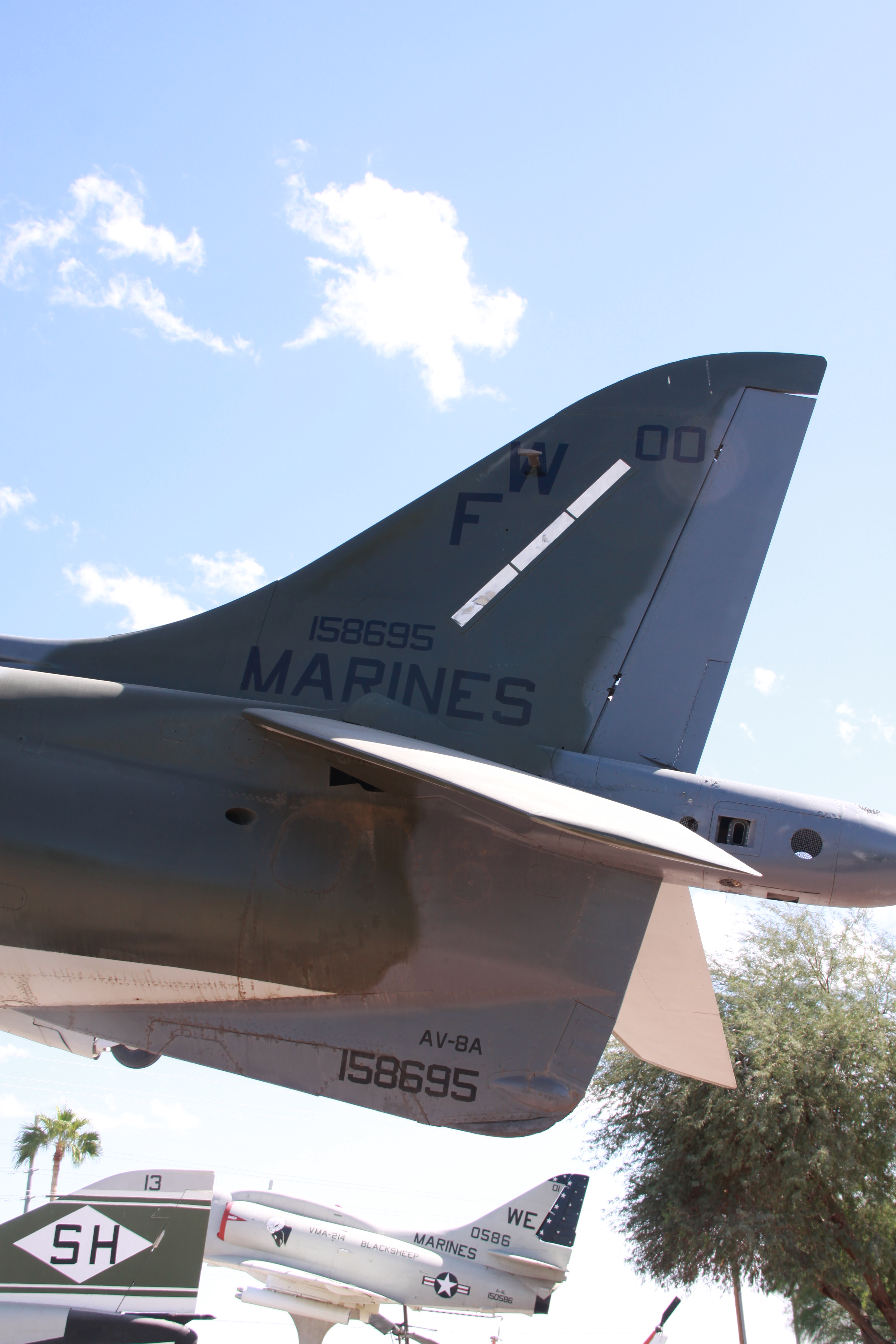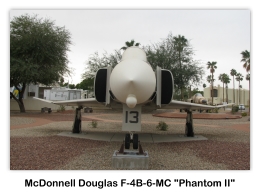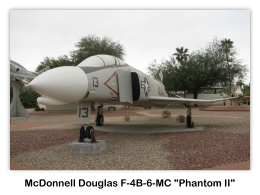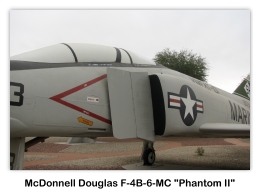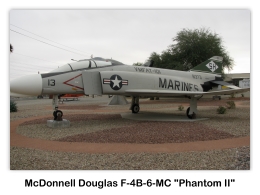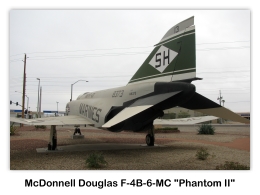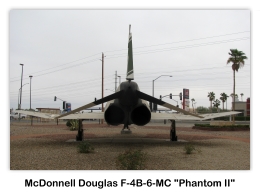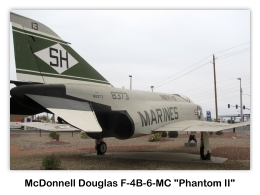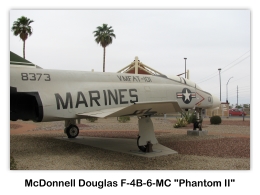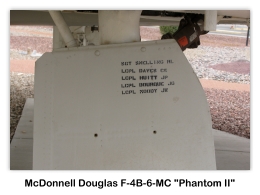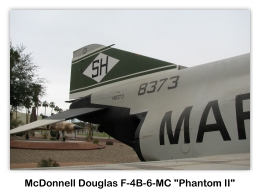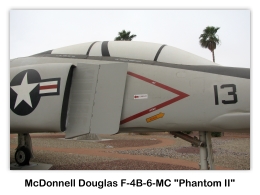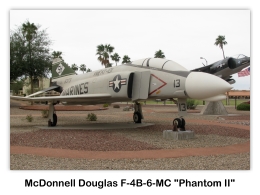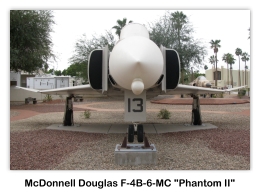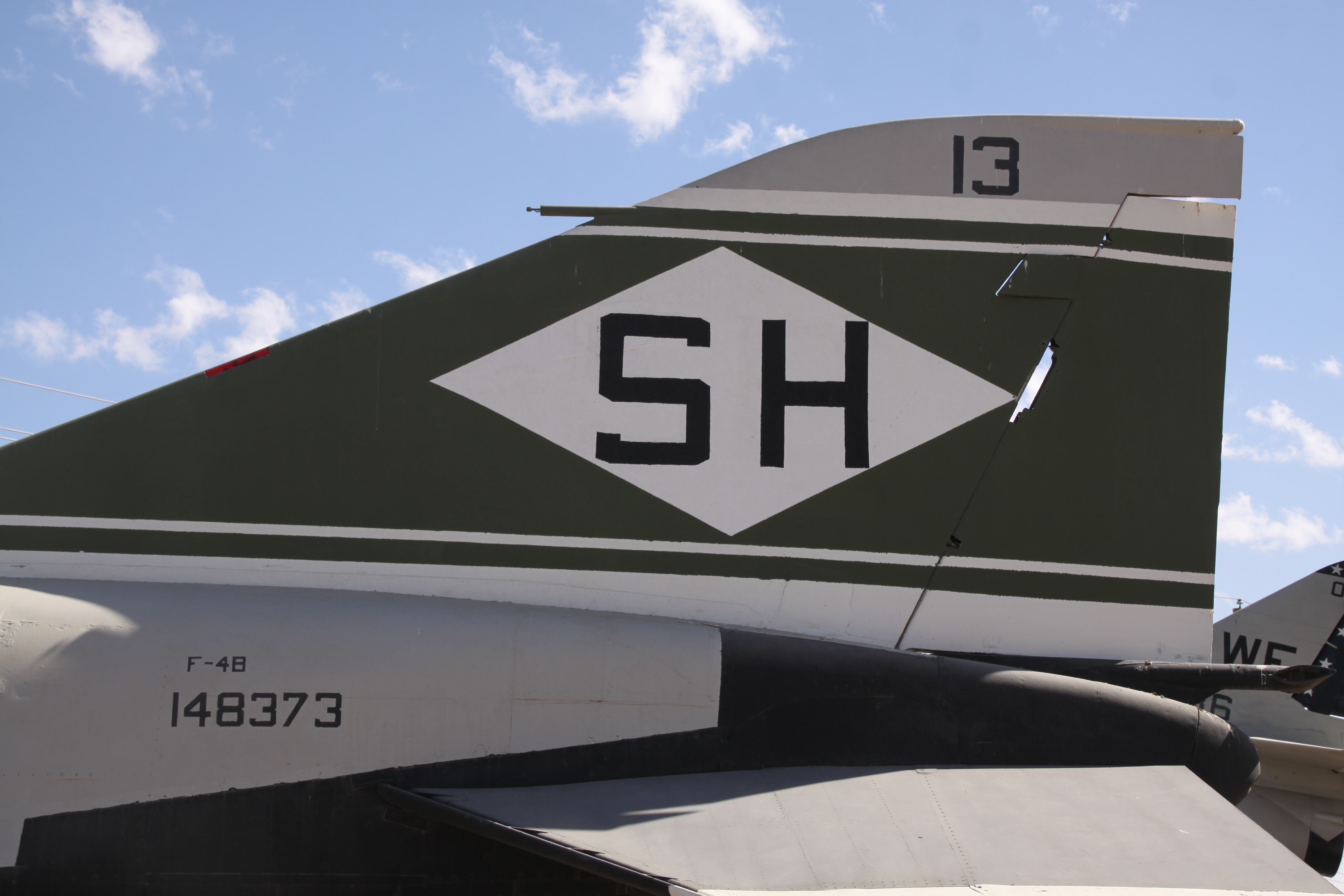


| Meteor Crater Visitor's Center, Winslow | Arizona Guide | American Legion Apache Junction Post 27 |
Yuma — US Marine Corps Air Station Yuma
Arizona Aviation Museum Guide
US Marine Corps Air Station Yuma ¹
Yuma International Airport
Yuma, Arizona
Overview ³
Marine Corps Air Station Yuma or MCAS Yuma (ICAO: KNYL, FAA LID: NYL) is a United States Marine Corps air station which is the home to multiple squadrons of AV-8B Harrier II's of the 3rd Marine Aircraft Wing, Marine Aviation Weapons and Tactics Squadron 1 (MAWTS-1) and Marine Fighter Training Squadron 401 (VMFT-401), an air combat adversary squadron of the 4th Marine Aircraft Wing of the Marine Corps Reserve. The station is located 2 miles from the city of Yuma, Arizona. A joint civil-military airport, MCAS Yuma shares facilities with Yuma International Airport and occupies approximately 3,000 acres, most of which is flat desert wilderness.
In 1928, the federal government purchased 640 acres near Yuma at the recommendation of Colonel Benjamin F. Fly. Temporary dirt runways were installed for usage by military and civilian planes. It was called Fly Field. The outbreak of World War II transformed the civilian airport into the Yuma Army Airfield. Construction of facilities began on 1 June 1942 and was activated on 15 December 1942. Yuma AAF was a single-engine flight training school, operated by the Army Air Forces Flying Training Command, West Coast Training Center, with flying training beginning in January 1943. Its training unit was the 307th Single Engine Flying Training Group which operated North American AT-6 Texans, with the base operating unit being the 403rd Army Air Force Base Unit. In 1944, the unit was upgraded to multi-engine flight training, operating Martin B-26 Marauders. In addition to the flying training, a Flexible Gunnery School was established at the airfield in November 1943. Flight training was discontinued on 23 April 1945 and gunnery training on 31 May 1945.
The base was closed on 1 November 1945. After the war, the airfield was turned over to the Department of the Interior as a headquarters for the Bureau of Land Reclamation. On 1 January 1954, Yuma County Airport was reactivated by the United States Air Force Air Defense Command (ADC) as a training facility. In the mid-1950s, ADC was equipped almost solely with rocket-firing North American F-86D Sabre Dog and Northrop F-89C Scorpion interceptors, and Headquarters USAF decided they should have their own training base. Yuma Airport became the home of the 4750th Training Wing (Air Defense). The 4750th had two major components, the 4750th Training Group (Air Defense) and the 4750th Training Squadron. The group had two flying squadrons assigned - the 4750th TS equipped with six North American F-86D Sabres Dogs and six Lockheed F-94C Starfires, and the 4750th Tow Target Squadron equipped with twelve Lockheed T-33A Shooting Stars and eight North American B-45A Tornados used to tow targets for the live fire portion of the course. The first ADC squadron arrived at Yuma for the Rocketry Proficiency Program on 1 February 1954. ADC squadrons rotated through Yuma on a regular basis for a two week proficiency program that included "live-fire" exercises over the Williams AFB and Luke AFB gunnery ranges.
The two week course included a controller course, many hours in the North American F-86D Sabre Dog simulator and at least one "live fire mission flown each day. The targets, usually towed behind North American B-45A Tornado tow ships, were 9 ft x 45 ft target sleeves, with two radar reflectors attached for the interceptor fire control systems to lock onto. Most of the TDY personnel were quartered in tents near the flight line, at least until April 1954 when the first permanent barracks buildings were finished and air conditioned. By June, seven ADC units had rotated through the Yuma program.
Also Headquarters USAF decided to add a separate air-to-air rocketry competition to the annual USAF gunnery meet that was held at Las Vegas Air Force Base (renamed Nellis Air Force Base in 1950). The Interceptor Phase of the competition would be held at Yuma between 20 June and 27 June 1954. The competition would take place each year, with the last occurring in 1956. Several changes occurred during the last half of 1954. On 24 August, Yuma County Airport was redesignated Yuma Air Force Base. On 1 September, the 4750th Training Wing became the 4750th Air Defense Wing (Weapons). The 4750th Group and squadrons were also redesignated. And on 8 January 1955, the 4750th Tow Target Squadron became the 17th TTS. Between July 1954 and the end of the year, ADC rotated eleven more squadrons through the Yuma program - nine in North American F-86D Sabre Dogs, and one each in Lockheed F-94C Starfires and Northrop F-89D Scorpions.
On 1 January 1956, the 4750th Drone Squadron was established as part of the 4750th ADW (Weapons). They were equipped with the brand new Ryan Q-2A Firebee drone, which was launched from a Douglas GB-26C Invader aircraft. Although the drones were in place by Spring, the first Douglas GB-26C Invaders did not arrive until June, and the first Firebee flight took place in July. The Ryan Q-2A Firebees were recovered by Piasecki H-21 Workhorse helicopters after landing on the desert floor.
Yuma AFB was renamed on 13 October 1956 as Vincent Air Force Base, the installation was named for Brigadier General Clinton D. "Casey" Vincent, one of Major General Claire Chennault's top fighter leaders in the China-Burma Theater and the second youngest General Officer in U.S. Air Force history, receiving his star at the age of 29. Vincent was the subject of a TIME magazine article titled "Up Youth", which covered the meteoric promotions of the Army and Air Force. Vincent was also an inspiration for the main character in the comic strip Terry and the Pirates. Vincent died of a heart attack in 1955 at the age of 40 while serving as the Deputy Chief of Staff for Operations, Air Defense Command (ADC) at Ent AFB, Colorado.
Marine Corps use of the 4750th Air Defense Wing was inactivate at Vincent AFB on 15 June 1959 and control of the base was passed over to the United States Navy. Nine days later the base was turned over to the United States Marine Corps. The base was renamed Marine Corps Air Station Yuma (Vincent Field) on July 20, 1962.
MCAS Yuma is currently the busiest air station in the Marine Corps, offering excellent year-round flying conditions and thousand of acres of open terrain for air-to-ground weapons ranges and associated restricted airspace for military flight operations. During the 1960's, 1970's and early 1980's, MCAS Yuma was home to VMFAT-101, the Marine Corps' Fleet Replacement Squadron (FRS) for the McDonnell Douglas F-4 Phantom II's, training U.S. Marine Corps, U.S. Navy and NATO/Allied flight crews and maintenance personnel in the McDonnell Douglas F-4B, F-4J, F-4N and F-4S. Following the transfer of VMFAT-101 to MCAS El Toro, California in the 1980s, MCAS Yuma became the principal Fleet Marine Force Pacific operating base for the AV-8 Harrier and AV-8B Harrier II under the cognizance of Marine Aircraft Group 13 (MAG-13).
Marine Aviation Weapons and Tactics Squadron 1 (MAWTS-1) is a major aviation command at MCAS Yuma, conducting training for all Marine Corps tactical aviation units, most notably the Weapons and Tactics Instructor (WTI) course. Marine Fighter Training Squadron 401 (VMFT-401) is a Marine Air Reserve squadron also based at MCAS Yuma, containing both active duty and Selected Marine Corps Reservists, providing aerial adversary/aggressor services and dissimilar air combat training (DACT) for all US military services and selected NATO, Allied and Coalition partners. MCAS Yuma is currently programmed to become the Marine Corps' initial operating base for the Lockheed F-35B STVOL variant of the Lockheed F-35 Lightning II Joint Strike Fighter (JSF).
Display Aircraft
At the Main Gate entrance to MCAS Yuma, there is a small Air Park inside the base's fence. This small Air Park contains four aircraft and a helicopter display.
- Bell HH-1N Iroquois “Huey” (BuNo 158248, c/n 314190
- Douglas A-4L Skyhawk* (BuNo 150586, c/n 12997, A4D-2N/A-4C/A-4L)
- Hawker Siddeley AV-8A Harrier (BuNo 158695, c/n 712092)
- McDonnell F-4B-6-MC Phantom II (F4H-1, BuNo 148373, c/n 58, F4H-1/F-4B-6-MC)
- Northrop F-5E Tiger II (AF 74-1570, BuNo 741570, c/n R.1266)
* My late father, Lt. Col. R.H. Melville (USMC) was CO of VMA-223 (A-4M's) at MCAS Cherry Point from 1977-1978. As a Douglas A-4C “Skyhawk”, BuNo 150586 was assigned to VMA-214 in 1965-1966 and was stationed at Chu-Lai, RVN. My father flew 150586 in combat for approximately twelve close-air support missions during the 1965-1966 timeframe with the Blacksheep.
R.H. Melville, Jr.
Special Thanks
A very special thanks to AFIA (A Friend in Arizona) and Peter S. Kuntz for providing us with the following photos.
Bell HH-1N Iroquois
Bell HH-1N Iroquois “Huey” (BuNo 158248, c/n 31419) on display (11/11/2011) at MCAS Yuma, Yuma, Arizona (Photos by AFIA)4
Bell HH-1N Iroquois “Huey” (BuNo 158248, c/n 31419) on display (10/11/2012) at the MCAS Yuma, Yuma, Arizona (Photo by Peter S. Kuntz)5
Douglas A-4L Skyhawk
Douglas A-4L Skyhawk (BuNo 150586, c/n 12997, A4D-2N/A-4C/A-4L) on display (11/11/2001) at MCAS Yuma, Yuma, Arizona (Photos by AFIA)4
Douglas A-4L Skyhawk (BuNo 150586, c/n 12997, A4D-2N/A-4C/A-4L) on display (10/11/2012) at the MCAS Yuma, Yuma, Arizona (Photos by Peter S. Kuntz)5
Hawker-Siddeley AV-8A Harrier
Hawker Siddeley AV-8A Harrier (BuNo 158695, c/n 712092) on display (11/11/2011) at the MCAS Yuma, Yuma, Arizona (Photos by AFIA)4
Hawker-Siddeley AV-8A Harrier (BuNo 158695, c/n 712092) on display (10/11/2012) at the MCAS Yuma, Yuma, Arizona (Photos by Peter S. Kuntz)5
McDonnell F-4B-6-MC Phantom II
McDonnell Douglas F-4B-6-MC Phantom II (BuNo 148373, c/n 58, F4H-1/F-4B-6-MC) on display (11/11/2011) at the MCAS Yuma, Yuma, Arizona (Photos by AFIA)4
McDonnell Douglas F-4B-6-MC Phantom II (BuNo 148373, c/n 58, F4H-1/F-4B-6-MC) on display (10/11/2012) at the MCAS Yuma, Yuma, Arizona (Photos by Peter S. Kuntz)5
Northrop F-5E Tiger II
Northrop F-5E Tiger II (BuNo 741570, AF 741570, c/n R.1266) on display (11/11/2011) at the MCAS Yuma, Yuma, Arizona (Photos by AFIA)4
Northrop F-5E Tiger II (BuNo 741570, AF 741570, c/n R.1266) on display (10/11/2012) at the MCAS Yuma, Yuma, Arizona (Photos by Peter S. Kuntz)5
Special Thanks
A very special thanks to A Friend in Arizona (AFIA) and Peter S. Kuntz for providing us with photos of the aircraft at this location.
References
- US Marine Corps Air Station Yuma, website
- Google Earth, Satellite Image
- Wikipedia, , Marine Corps Air Station Yuma
- Photos: A Friend in Arizona (AFIA), 11/11/2011
- Photos: Peter S. Kuntz, 10/11/2012
Copyright © 2014 Skytamer Images, Whittier, California
All rights reserved
![Satellite view of the MCAS Yuma Air Park, Yuma, AZ [2]](http://www.skytamer.com/6.1/AZ/MCASYuma_b.jpg)
